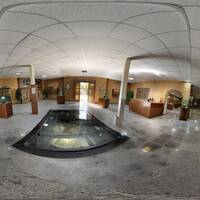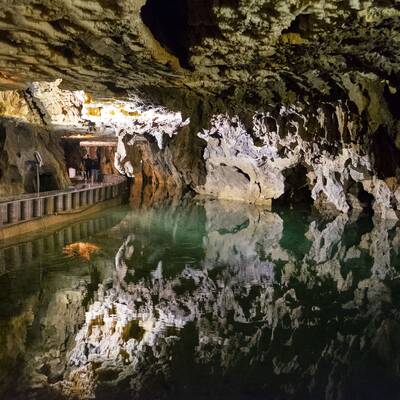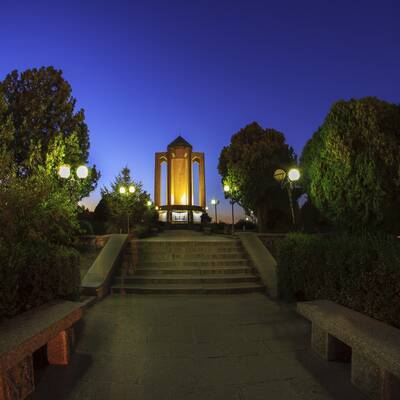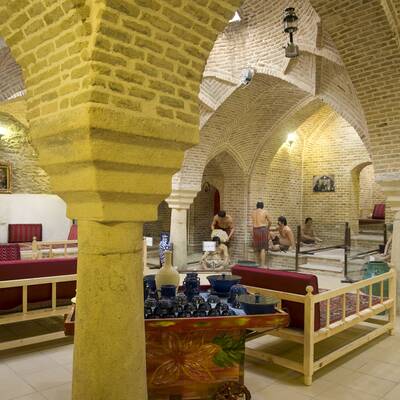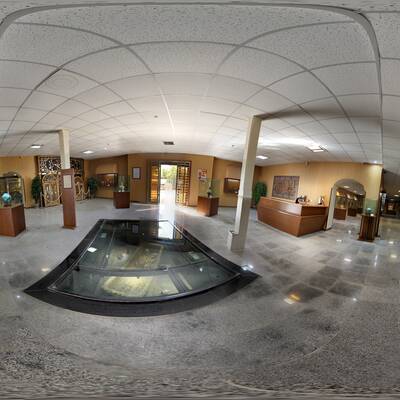The historical museum of Ecbatana is placed on the eastern hillsides of the central Zagros and in the center of Hamedan city. The hill is stretching northwest-southeastward in oval shape with more than 1000 meters length and 500 meters width, encompassing totally an area of fifty hectares. Its highest level from the surrounding grounds is about twenty meters and the natural infrastructure of this huge ancient area is a rock hill made of grey stone. As one of the most significant ancient hills in Iran, Ecbatana has always been controversial in terms of its relation to the location of the ancient Ecbatana city (the Medes’ capital) and there is yet no general consensus on the issue between historians, travelers and geologists. Not only are the Greek historians’ writings contradictory on how the ancient city of Ecbatana was founded and who was its founder, but the Islamic historians are also still debating on the subject.
Encompassing an area of over 600 square meters, the Ecbatana Museum is placed in the center of the ancient hill. The building used to be a six-class school during the 1940s which was converted into the Center of Archaeology in 1971 after a period of extensive excavations and discoveries. It was later in 1993 when the school was officially changed into the Ecbatana Museum through some restoration and construction projects and it currently includes a main room and two halls. The museum has two parts: Historical and Islamic, the former on display in the western hall and the latter in the eastern one. The materials in both halls are mostly the findings of the abovementioned excavations on the hill.
The objects here are over 200 among which the oldest one is a huge pottery container belonged to fifth millennium B.C. The main collections located in the museum are: pottery collection (large jars used for conserving food), stone, bone, metal objects, stone and pottery coffins belonged to Parthians, different kinds of Islamic gravestones with Kufic, Thuluth and Nastaliq inscriptions, decorative jars and stones of Islamic history, the base of Achaemenid columns discovered from their palaces, stone and glass seals, and pottery cow head of Achaemenids.

